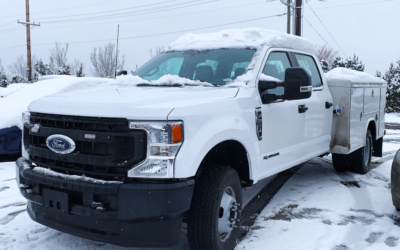Is 4 Wheel Drive Good for Snow?
With the current economic situation faring better for our country, the number of new car sales has never seen itself rise as fast as it is now since the onset of the Great Recession. With the year coming to an end, most of the country is seeing the brunt of the cold winter months. Many places in the country are snow-ridden and motorists are looking for the kind of vehicles that can handle extreme climatic conditions. With so many different kinds of cars out there on the market, it only begs to ask the questions: What kind of vehicle should you get? Is 4 wheel drive good for snow?
While the typical setup for most cars, for the longest time, has been the front-drive system, sports cars and luxury cars happen to primarily have the rear-wheel drive setup. While both of these are popular options, a third of the proportion of the total number of cars sold in the United States belongs to another category. There is a rising demand for four-wheel drive vehicles and all-wheel drive vehicles. With plenty of 4×4 trucks from different manufacturers offering both these driving setups, motorists are looking to take advantage of their traction-enhancing abilities.
Of course, since 4×4 trucks come in both all-wheel drive and four-wheel drive options (both designed to offer better traction to motorists), buyers must decide which one is worth investing in. Choosing the right vehicle configuration is not a simple black-and-white matter. Several factors have to be considered when making this decision, but the primary concern at this time of year is the vehicle’s ability to drive properly in icy and snowy conditions. This article is here to help you understand the best 4×4 for snow and ice.
Here is a quick overview of the different configurations of vehicles and the advantages they offer to motorists. This can help you better understand which kind of 4×4 truck is best for snowy and icy conditions.
Front-Wheel Drive
Vehicles with front-wheel drive configuration are the most standard. This is found in everyday normal cars and cross-over trucks. Trucks do not typically have these configurations since they are used mainly for operating vehicles in cities that face moderate cold conditions.
Rear-Wheel Drive
The rear-wheel drive configuration has long been a standard for cars that look to provide superior handling capabilities to drivers. Suited for luxury vehicles and sports cars, driving a rear-wheel drive vehicle can be problematic in extreme cold. Drivers of rear-wheel drive vehicles may need assistance when it comes to getting their cars moving in snow-covered areas. In fact, an increasing number of rear-wheel drive cars offer the option to switch to an all-wheel drive configuration in order to make them more suitable for winter conditions.
Four-Wheel Drive
Sports Utility Vehicles have traditionally been referred to as 4x4s and before the number of SUVs started to increase back in the 90s, they were all just called 4x4s. This is because these vehicles had four-wheel drive systems that enabled them to drive through some of the toughest terrains in the most restrictive conditions.
That was suitable for a time when four-wheel drive vehicles initially boomed, but the 4×4 trucks today have more sophisticated versions of four-wheel drive. They vary from each other, depending on whether they have been customized for on-road use or off-road use. Many vehicles offer part-time four-wheel drive options where the engine sends power only to the rear wheels until they push a button to send power to the front wheels as well.
Full-time four-wheel drive is now available on many 4×4 trucks, which also has an automatic mode that provides power to the front wheels of the truck based on the need. This sparks the question: are trucks good in the snow? It makes use of sophisticated sensors that make the engine automatically send power to the front wheels in order to prevent the wheels from slipping. This helps the driver to remain safe while operating with 4 wheel drive in snow.
When it comes to 4×4 trucks with permanent four-wheel drive, all four wheels receive power from the engine all the time. While it offers the same automatic safety precautions that full-time four-wheel drive configuration does, it does not offer the option to switch to just rear-wheel drive.
All-Wheel Drive
All-wheel drive configuration is now becoming increasingly common in typical passenger cars and several crossover SUVs. There are a few 4×4 trucks that offer the all-wheel drive option too. The Toyota Sienna is a minivan model that comes with an all-wheel drive configuration.
All-wheel drive and four-wheel drive seem like the same thing. To a certain degree, that is actually correct. All-wheel drive is similar to four-wheel drive. The engine sends power to the front or rear wheels when it is required in order to maintain better control over the vehicle. This is especially true when it comes to extreme conditions where the car might be operating on a slippery road.
The all-wheel drive configuration is actually more active when it comes to providing better stability on slippery or wet roads. 4×4 trucks that have the all-wheel drive option offer the vehicle more ground clearance. This comes in handy for people that live in extremely snowy conditions, where roads become snow packed, especially at this time of the year.
There are some 4×4 trucks with the all-wheel drive configuration that have been designed to provide better traction on dry pavement. There are some that can send more power to the outside wheels in order to provide superior traction to the vehicle for more stable cornering.
Four-Wheel Drive vs. All-Wheel Drive: The Final Verdict
The all-wheel drive is a much better option to consider when it comes to icy and snowy conditions. The higher ground clearance makes it easier to operate 4×4 trucks through thick snow, and the variable power distribution between the wheels makes the 4×4 trucks more stable even through the most slippery roads and they can operate equally well on dry pavements. For all your 4×4 truck rental needs, contact us today for a quote.




